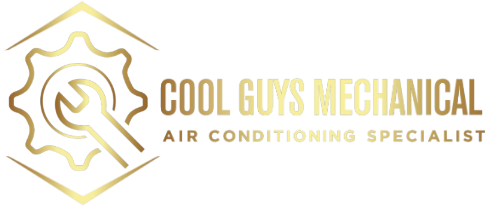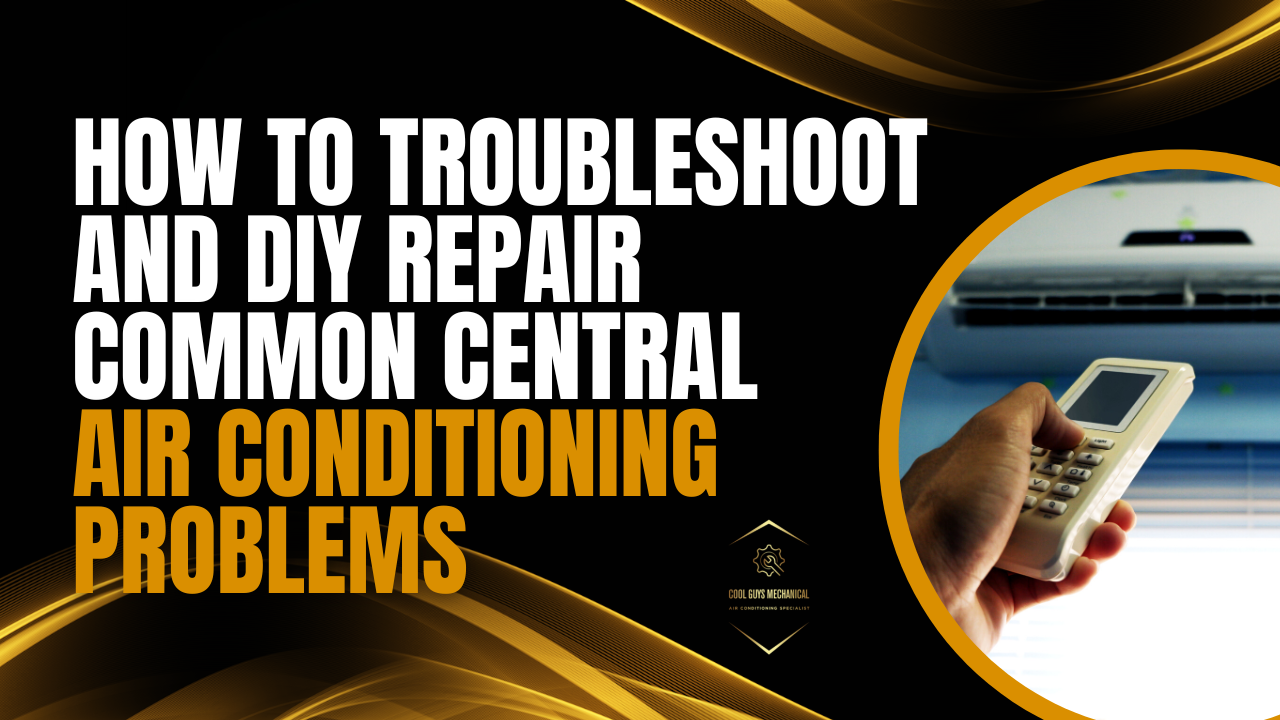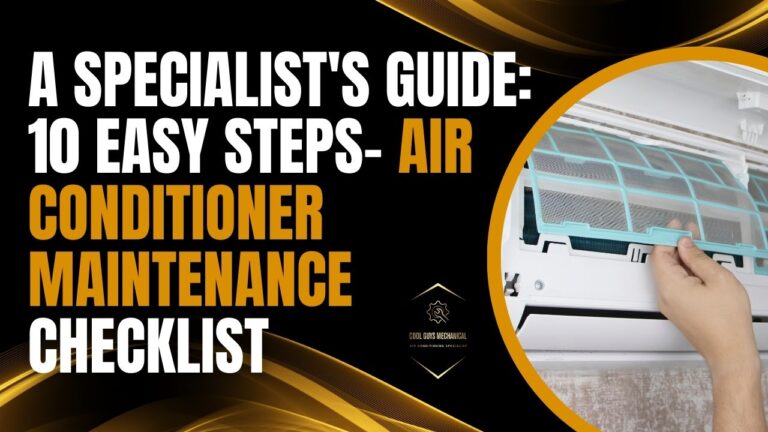One more season to go, and the Hawaiian summer will soon make waves, so you’ll want to start off comfortable in the upcoming season.
When warm weather hits off, the last thing you would want is a malfunctioning central air conditioning system.
Maintaining your home relaxed and comfortable is crucial as these heat waves do not go without causing health problems (i.e., heat stroke).
Aside from our passion and dedication to providing air conditioner services, we at Cool Guys Mechanical are also committed to giving you valuable tips on troubleshooting common AC problems.
Let’s go ahead and get started!
1. Air Conditioning Won’t Turn On
One of the most worrying moments you might experience is when you attempt to turn on your air conditioner, and nothing happens. This can be caused by a blown fuse, tripped circuit breaker, broken or loose wiring, or thermostat problems.
What to do:
Reset the circuit breaker or replace the blown fuse.
2. Dirty or leaky ducts
Are you noticing warm airflow coming from your air conditioning unit? It could mean improper airflow from your ducts.
Although ductworks in central air conditioning systems appear sealed and run through the walls and ceilings, tears are common and inevitable due to mice or inattentive workers.
The air ducts transport the return air to your system from cooling and treatment. A rip or hole in your ductwork can cause the cool air to leak inside your walls, causing your home to become warmer due to the leakage. In addition, this will force your AC system to work harder and increase your monthly electric bills.
What to do:
Add duct inspection to your list of air conditioning troubleshooting steps.
3. Condenser issues
The condenser is one of the essential components of your air conditioning unit. It is in charge of releasing the heat extracted from the air outside your home. Condenser coils are usually placed outside, which means it is subject to dust, soot, and other pollutants that make them dirty.
Heat transfer will be hampered if the coils are unclean, making your AC work double-time and hastening its wear and tear.
What to do:
Don’t forget to check your condenser outside your home. Clear off dirt and debris from it. Try spraying the unit with a hose. Trim overgrown grass and weeds nearby. Ensure there’s enough breathing space for the condenser to release the heat.
4. Thermostat Glitch
A malfunctioning thermostat may fail to signal your air conditioner to turn on. Although the more recent programmable thermostats can sometimes be challenging to set up, the older dial-type thermostats are more frequently prone to calibration issues.
What to do:
Refer to your thermostat’s manual when troubleshooting your air conditioner to ensure you have correctly programmed your thermostat.
If the system still doesn’t turn on even after lowering the thermostat’s temperature settings, call your trusted central air conditioning repair professional, as it would need recalibration or replacement.
5. AC is not cooling
If your air conditioning unit is not cooling or the air feels a little sticky, it can be underperforming or has low refrigerant levels.
A low refrigerant level can typically indicate a leak or undercharging during installation. Without the proper refrigerant level, heat and humidity won’t be removed from the air effectively.
What to do:
Call an expert AC technician to investigate if there’s a refrigerant leak. In such cases, unit replacement is recommended, primarily if numerous leaks are found.
6. Frozen Evaporator Coil
Before starting your air conditioner troubleshooting task, you should consider the possibility that your evaporator coil can be a suspect for the warmer-than-usual temperature. The coil contains heat-absorbing refrigerant.
When you feel like the airflow is diminished, it could be that a layer of ice has developed in it. If this happens, you will experience heated or no air from your air conditioner.
What to do:
To melt the ice from the evaporator coil, change the FAN setting to ON from AUTO. By turning on the blower, warm air will continuously flow over the evaporator coil, aiding in the melting of the ice.
7. Drainage problems
The moisture removed from your air conditioner is intended to be channeled into a drain through a drain line and into a pan.
However, if the drain is clogged and the pan overflows, the water will regurgitate back up and harm your system. This can result in water leaks that can cause damage or harm to your building’s structure and possessions.
What to do:
If you notice a leak in your home, immediately turn off your AC unit. Try fixing the issue with a wet/dry vacuum and see if the water leakage subsides. If not, it likely needs replacement.
8. Odd noises
Your air conditioning unit includes a fan that circulates indoor air over the evaporator coil to keep it cool and a condenser coil to blow the heat to the outside of the building.
Fan motors can be a common source of noise, which can be amplified when covered in dirt and debris, worn-out belts, or bearings.
What to do:
If you detect an odd noise, it is advised to turn off your air conditioning unit and contact an AC specialist to prevent further damage.
9. Loose connections
When the problem is in the electrical wiring, more current flows through the cables, thus, creating a short circuit. This can harm your air conditioning unit and pose a fire hazard to your home.
Faulty wirings or worn-out cables can cause poor capacitor performance or fuse trouble. Each time you switch on your AC unit, faulty wiring could trip the circuit breaker.
What’s worse is that your AC won’t turn on due to poor wiring or a blown fuse.
What to do:
Check the AC breakers on your electrical panel. Turn the breakers on and off again, then try running your air conditioning unit for a few minutes. If nothing happens, you may need to replace the fuse. To be safe, call a licensed electrician to investigate the problem.
10. Dirty or clogged filters
If your air conditioner filter is unclean or obstructed, it will eventually overheat as it tends to work harder to produce the same cooling effect. As the pressure on your air conditioner increases, it heats up rapidly.
The longer the dirt stays on those filters, the more energy your AC unit will require, and the higher your monthly electricity bill will be.
What to do:
Remove your air conditioner’s filter and wash it under warm water. Dry your filter, then reinstall it. See if your air conditioner is cooling your room. Otherwise, if the issue persists, you might need to purchase a new filter and replace the old one.
Helpful Tips to Avoid AC Problems

To summarize, the following are some of the things that you can do to prevent central air conditioning system problems:
- Clean or replace clogged filters
- Clear the area around your outdoor unit.
- Check for tears and damage on your ducts and have them repaired or replaced if necessary.
- Install a programmable thermostat, as this can help you save more energy.
Final Thoughts
There are air conditioning problems that you can avoid by doing routine AC troubleshooting. One major takeaway from this article is that regular and proper maintenance of aircon is the best way to prevent problems.
Although do-it-yourself air conditioning troubleshooting can help your system run more efficiently, a routine maintenance plan can prevent the most common issues.
If you are looking for an “air conditioner repair service near me,” don’t hesitate to call Cool Guys Mechanical. We offer a wide range of high-quality air conditioning services that guarantee customer satisfaction.










